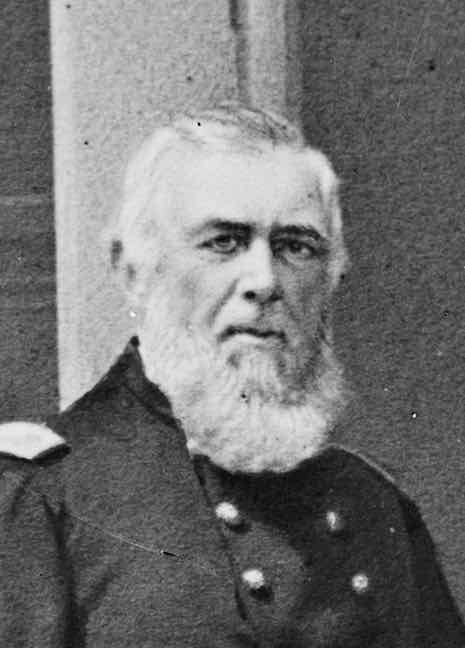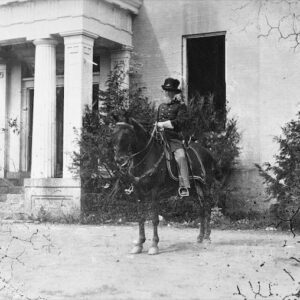Tag: Miles (Dixon S.)
 Wikipedia says: Dixon Stansbury Miles (May 4, 1804 – September 16, 1862) was a career United States Army officer who served in the Mexican-American War and the Indian Wars. He was mortally wounded as he surrendered his Union garrison in the Battle of Harpers Ferry during the American Civil War.
Wikipedia says: Dixon Stansbury Miles (May 4, 1804 – September 16, 1862) was a career United States Army officer who served in the Mexican-American War and the Indian Wars. He was mortally wounded as he surrendered his Union garrison in the Battle of Harpers Ferry during the American Civil War.
…Miles spent the years before the Civil War on frontier duty battling Indians. In 1857 he fought against Indians along the Gila River, New Mexico, and against the Navajo in 1858. In 1859 he was promoted to colonel and commander of the 2nd U.S. Infantry, stationed at Fort Leavenworth, Kansas.
When the Civil War started, Miles was recalled to Washington, D.C., and briefly commanded a brigade in the division of Maj. Gen. Robert Patterson before being transferred to the army of Brig. Gen. Irvin McDowell, in which he commanded a division of two brigades. During the First Battle of Bull Run, his division was in reserve, but he was accused by Brig. Gen. Israel B. Richardson of being drunk during the battle. A court of inquiry validated this accusation; and, after an eight-month leave of absence, he was reassigned to what should have been a quieter post. In March 1862 he commanded a brigade that defended the Baltimore and Ohio Railroad and, in September 1862 he was given command of the U.S. arsenal at Harpers Ferry.
During the Maryland Campaign, in which Confederate general Robert E. Lee invaded the U.S. state of Maryland, Col. Miles’s garrison at Harpers Ferry stood directly on Lee’s supply line through the Shenandoah Valley. He was ordered by General-in-chief Henry W. Halleck to hold the important U.S. arsenal and railroad bridges until he was relieved by Union forces under Maj. Gen. George B. McClellan. Lee sent columns converging from three directions to surround Harpers Ferry. Unfortunately for him and his army, Miles apparently treated his orders to defend the town too literally and stationed most of his 14,000 men just outside the town to the west, on Bolivar Heights, neglecting the commanding heights to the northeast (Maryland Heights) and to the south (Loudoun Heights). When his token defensive force on Maryland Heights was defeated, the town was surrounded and virtually indefensible. When Confederate Maj. Gen. Stonewall Jackson began to bombard the town on September 15, 1862, from the heights he had seized, Miles held a council of war with his brigade commanders and decided to surrender. Before the white flag could be raised, he was struck in the left leg by an exploding shell, mortally wounding him. Some of his men accused him of being drunk on duty again and were so thoroughly disgusted by his inept defense that it was said to be difficult to find a man to carry him to the hospital. Miles died the next day and is buried in St. James Episcopal Church Cemetery in Monkton, Maryland.
Showing the single result
